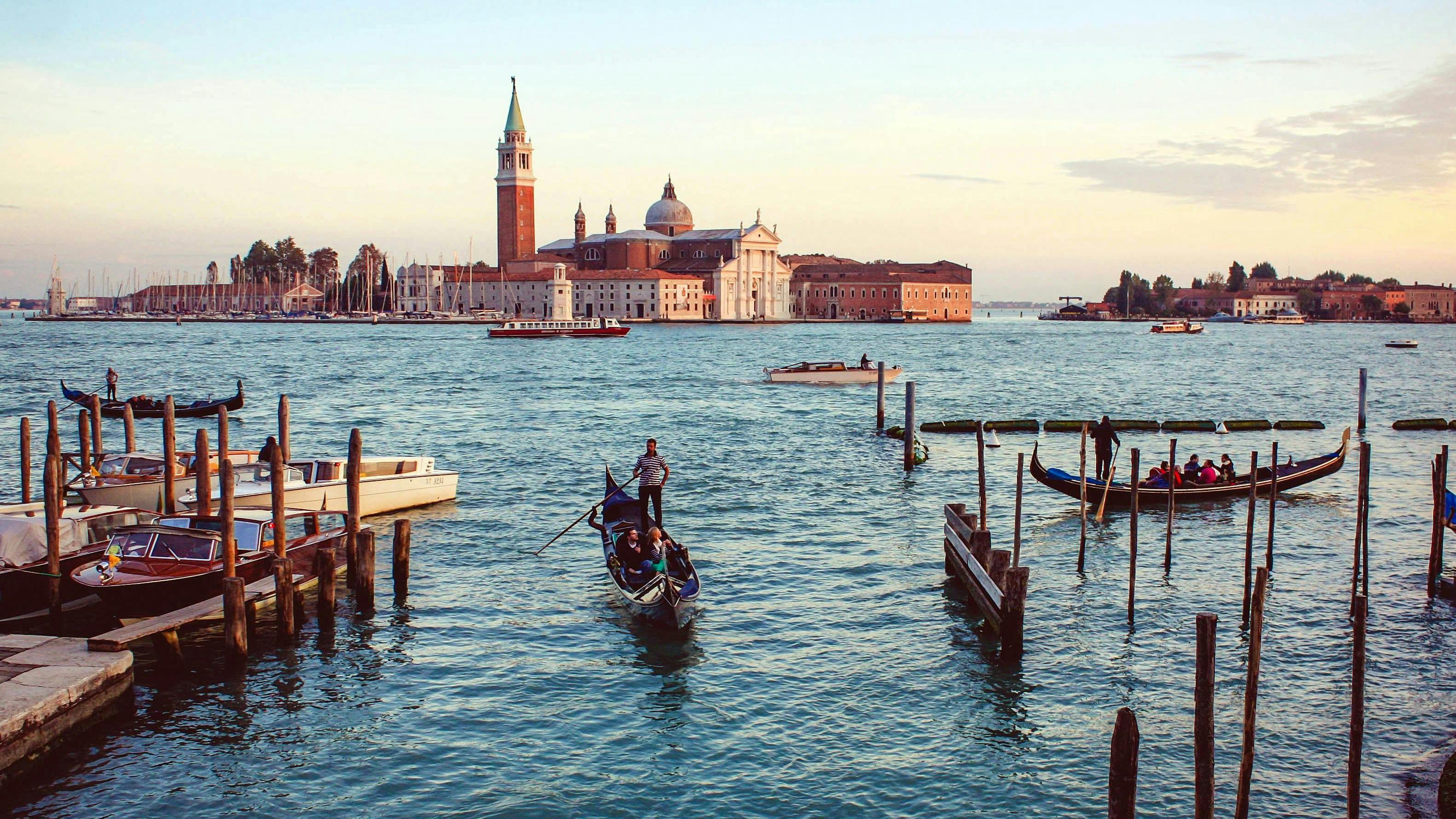

Tell me what you eat, and I will tell you who you are. Cuisine, like any cultural practice, is the litmus test of a people’s history. By observing its constituent elements - from ingredients to typical dishes to cooking methods - we unfold the history of a particular territory, where over the centuries customs from very distant areas have layered and mingled.
Cuisine as a Mirror of History
Venetian cuisine is no exception, and what we know today is the result of centuries of events that have seen the meeting of different cultures and peoples.
At the height of its splendor, the Republic of Venice was not only an unparalleled naval power but also the gateway, the connecting link between East and West. A crossroads traversed by merchants, sailors, and pilgrims headed to the Holy Land, the cuisine of the Serenissima took advantage of what we would now call a melting pot, gladly embracing the charm of unknown and exotic flavors and thus becoming a sort of fusion cuisine avant la lettre.

Risi e Bisi recipe
We now present a typical Venetian recipe: Risi e Bisi from our Cesarina Catia.
Here’s what Catia says: "This is the dish that Venetians love to make with the arrival of spring using the prime ingredient par excellence: peas! It is an ancient dish that was offered to the Doge during the celebrations of St. Mark with the first peas arriving from the Vicenza area. Its consistency is creamy, but slightly brothy".
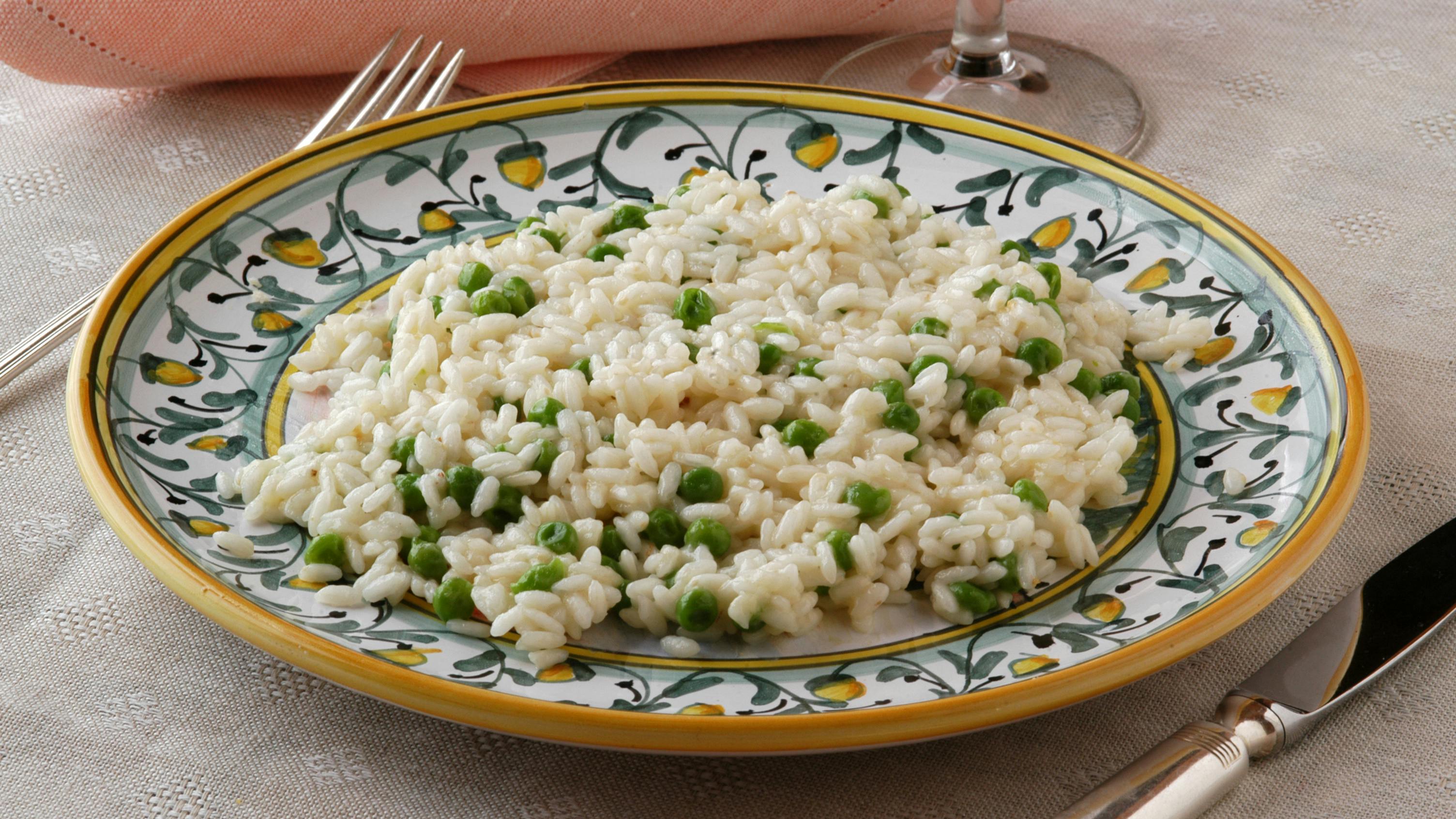
Risi e Bisi
A typical dish of Venetian tradition
Ingredients
- 200 g of Vialone nano rice
- 1 kg of peas in their pods
- 10 g of butter (or vegetable butter for vegans)
- One large white onion
- 2 liters of water
- Oil to taste
- Salt to taste
- Pepper to taste
- 1 tablespoon of robiola (or another spreadable vegetable cheese for vegans)
- 4-5 mint leaves
Method
- Shell the peas and keep about half of the pods.
- Thinly slice half the onion and brown it with 3 tablespoons of oil.
- Add the peas and cook for five minutes; then pour in two glasses of water and adjust the salt and pepper.
- Cook on low heat until the peas are tender, then remove from the heat.
For the vegetable broth:
- In 2 liters of water, add the pods you set aside and the other half of the onion; add salt, pepper, and a tablespoon of olive oil. Boil on low heat for an hour.
- When the broth is ready, strain the vegetables and adjust the salt if necessary.
For the risotto:
- Dry-toast the rice over high heat, stirring constantly.
- Add more than half of the peas to the rice (use the remaining peas to make a garnish cream) and a ladle of the broth you prepared: when the broth is absorbed, add another ladle (continue this way until the end of cooking).
- While the rice is cooking, blend the remaining peas with oil, a bit of water, and a tablespoon of robiola, adjusting the salt and pepper.
- When the rice is al dente, add another ladle of broth (at the end of preparation, the rice should be soft).
- Stir and plate. With the pea cream, form “pearls” placed on the rice and on each pearl, put a small mint leaf.
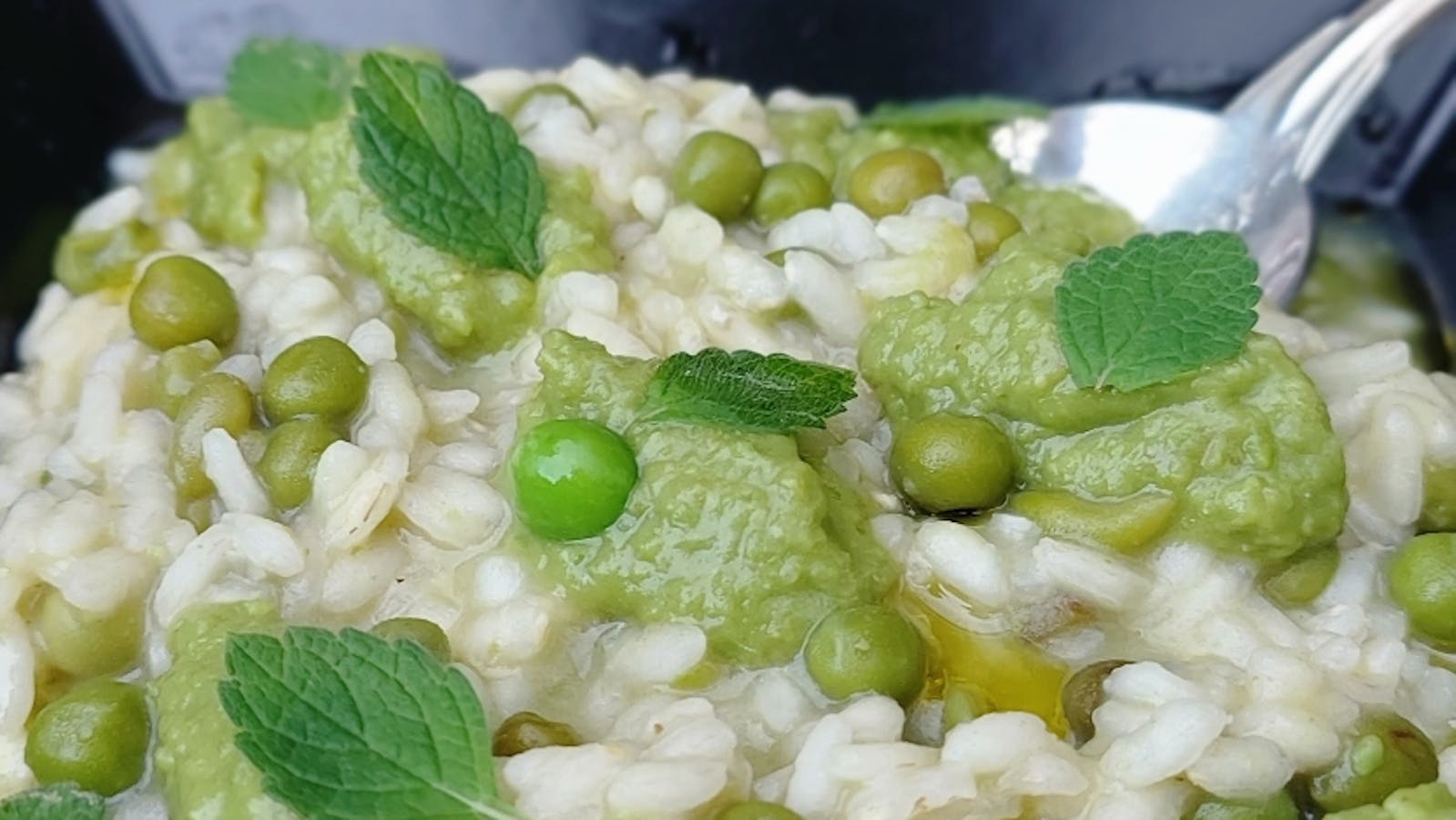
What is Venetian Cuisine like?
Traditional Venetian cuisine is simple and complex at the same time. It is simple because its basic elements and preparation methods are simple, and it is complex because it intertwines very different flavors that have blended over time. Thus, we should not be surprised if alongside the use of by-products such as liver and spleen we also find refined preparations like stuffed duck and oyster soup.
But what are the typical dishes of Venetian cuisine? We cannot fail to mention sarde in saor: their special taste comes directly from Constantinople, and their success was also due to the fact that they could be consumed even after days, making them particularly suitable for long voyages.
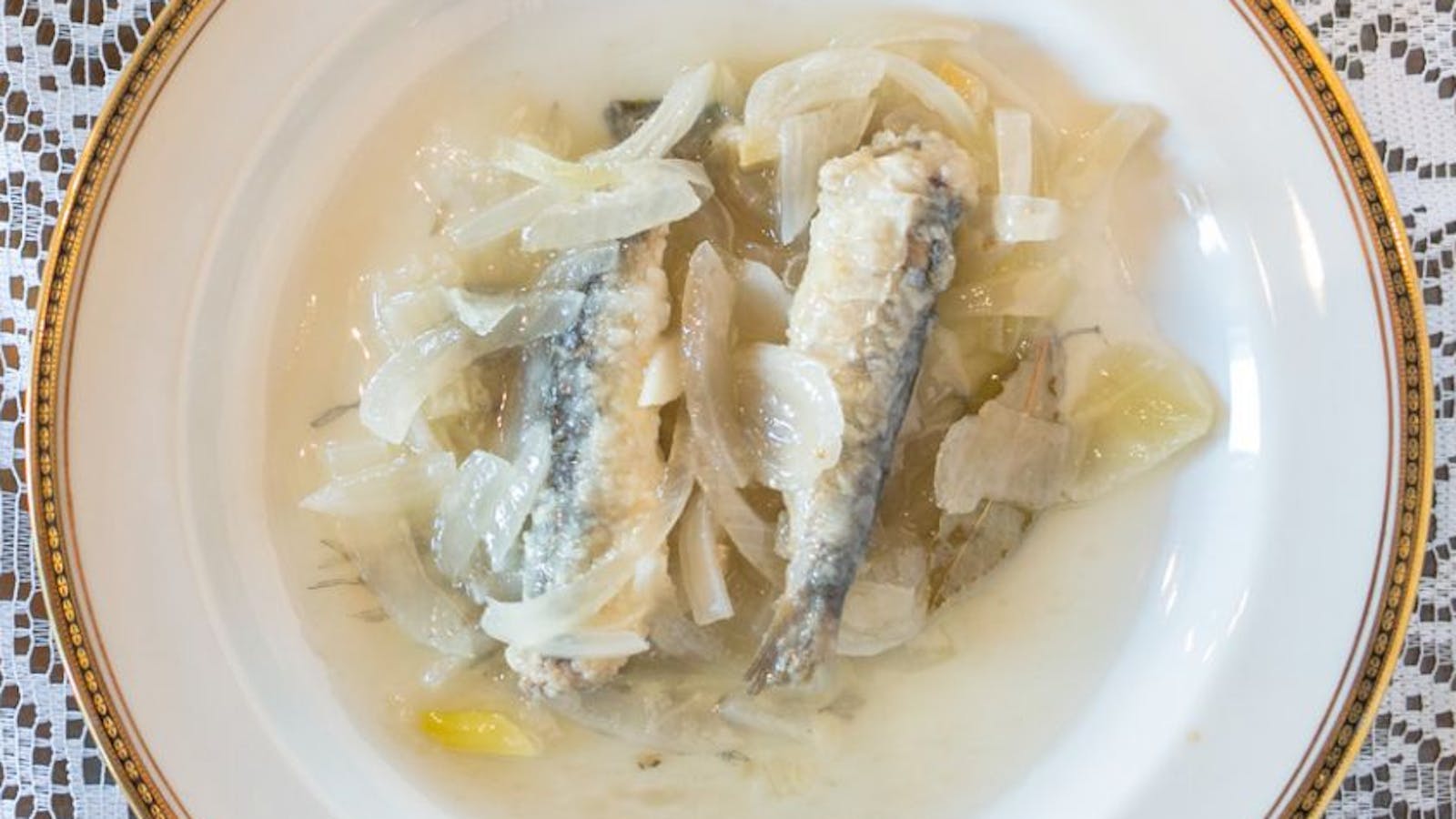
Besides sarde in saor, we recall risi e bisi, a typical dish for the feast of St. Mark, Venetian liver, and polenta e osei, which reminds us that from the medieval period it was customary to hunt in the valley. Among the sweets, mostly dry and spiced, the baioli, zaeti with saffron, pevarini with pepper, and pan del Doge hold a place of honor.
Products characterizing Venetian Cuisine
Spices
Among the typical products of Venetian cuisine, spices surely hold a place of honor. Pepper, cinnamon, ginger, nutmeg, and saffron found fertile ground in the kitchens of the Serenissima. Used in the preparation of sweets and to flavor meats and fish, these aromas were added to dishes in large quantities, especially in the late Middle Ages because they were believed to counteract diseases: a 14th-century ginger chicken recipe required as much as 750 gr of spices!
The Venetians were not only sailors but also shrewd merchants, true marketing men, we would say today. Sensing the potential of that market, the Serenissima quickly took control of the spice route that brought large quantities to its ports: we know that in the 15th century about 5,000 tons were unloaded annually. Extremely expensive, the Venetians were adept at creating demand for spices where there was none and selling them throughout the West at a high price in convenient ready-to-use sachets (the “sacheti veneti di speciarie veneziane” - basically packaging before it was called packaging): owning them was for the wealthy another sign of their prestige, a status symbol, in short.
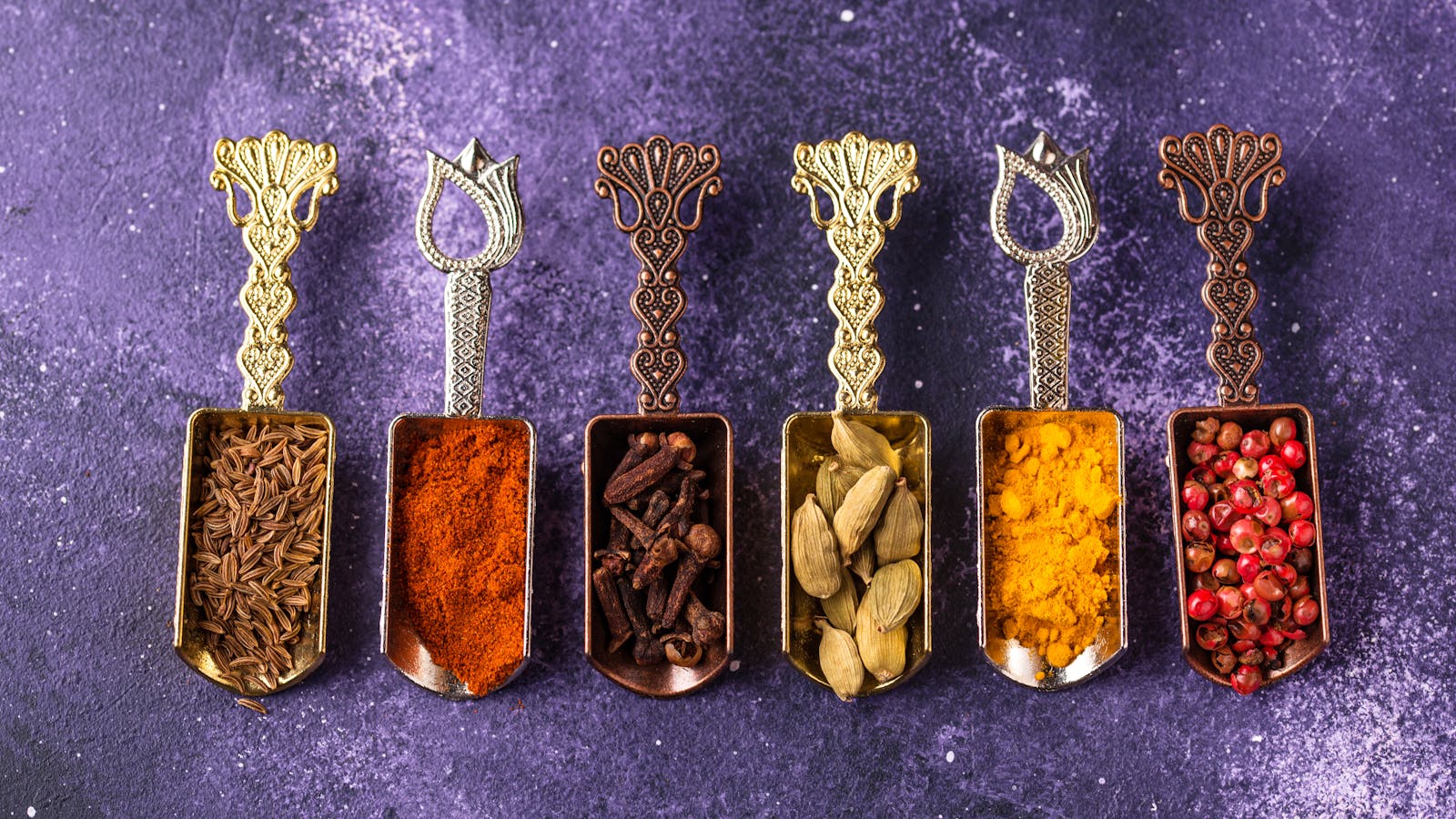
Sugar
And from spices, we move on to sugar. Brought to Venice by the Crusaders in the year 1000, it spread thanks to the noble Corner family who bought plantations in Cyprus and Crete. Like spices, this white powder was also a status symbol: the Doges had sculptures made from blocks of sugar as a sign of their greatness, and it is said that even Canova tried his hand at shaping this unusual material.
Rice
Another staple product of Venetian cuisine is rice. Certainly, we can imagine creamy risottos only after the 1500s; before then, rice was sold in spice shops and was so expensive that it was sold grain by grain: it was ground into flour and used as medicine, or as a thickener for soups.

Salt Cod
Finally, this list would not be complete without salt cod. This product made its appearance in the alleys of Venice from the mid-1400s following an unfortunate event: a shipwreck. Navigator Piero Querini had set sail for Flanders when his vessel sank near the island of Lofoten (Norway). Rescued, he was taken to the island of Røst, where he saw this strange sun-dried or salted fish for the first time, as hard as wood. Querini brought salt cod to the Lagoon where it was appreciated, but it did not immediately meet great success: it was only from the mid-1500s that salt cod consumption took off. The reason? The Council of Trent. Among the Council’s decisions was the ban on eating meat for 200 days: salt cod became an excellent substitute for meat and it became customary to eat it on Wednesdays and Fridays.

Cooking Classes in Venice
Has the history of Venetian cuisine made you want to learn how to prepare its most typical dishes? Choose from the best cooking classes in Venice by Cesarine: preparing sarde in saor, risi e bisi, and many other traditional recipes at home will be like bringing home a piece of this unique city.